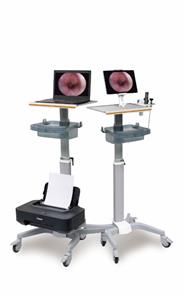Hearing improvement and safety analysis of ear endoscopic surgery in patients with chronic suppurative otitis media
The clinical data of 97 patients (153 ears) with chronic suppurative otitis media admitted from January 2019 to January 2020 were divided into research group (50 cases, 81 ears) and control group (47 cases, 72 ears) according to different treatment methods. ). The patients in the control group were treated with flushing and aspiration under the ear endoscope; according to the pathological examination results of the patients in the study group, 21 cases were of the simple type, 14 cases were of the bone ulcer type, and 15 cases were of the cholesteatoma type. Simple tympanoplasty under endoscopy, cholesteatoma and bone ulcer patients were treated with radical mastoidectomy under ear endoscope. The average hearing threshold and air-bone conduction difference, clinical efficacy and postoperative complications were compared between the two groups before operation and half a year after operation. Results There was no significant difference in the average air conduction threshold and air-bone conduction difference between the two groups before operation (P>0.05); half a year after operation, the average air conduction threshold and air-bone conduction difference of the study group were significantly lower than those in the control group ( P<0.05), half a year after operation, there was no significant difference in the average hearing threshold of air conduction and air-bone conduction difference of different disease types in the study group (P>0.05); the total clinical effective rate of the study group was significantly higher than Control group (100.00% vs 74.46%) (P<0.05); the total incidence of postoperative complications in the control group was 8.51%, and the total incidence of postoperative complications in the study group was 10.00%. There was no significant difference in the incidence of symptoms (χ2=0.064, P=0.801). Conclusion The clinical curative effect and safety of ear endoscopic surgery for patients with chronic suppurative otitis media are good, and it is worthy of clinical promotion.




